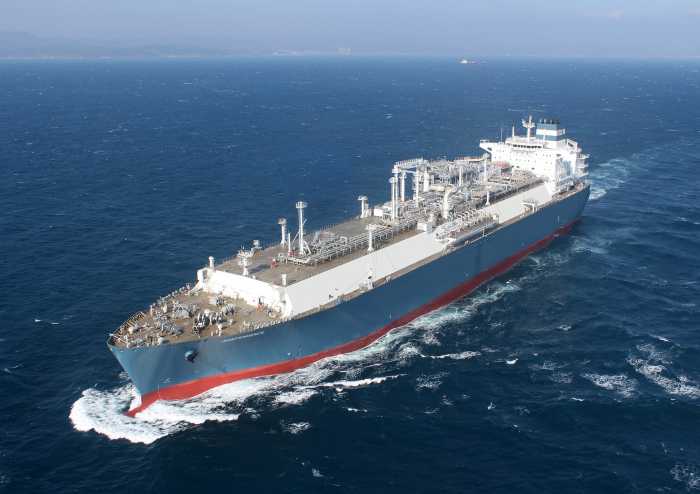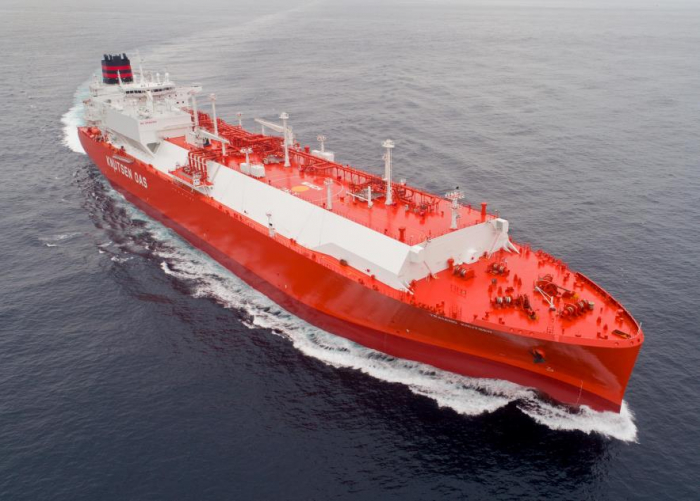Hyundai eyes LNG ship-to-floating storage unit conversion market

The ongoing war in Ukraine and tougher emission standards are creating a new market for shipbuilders: converting aged liquefied natural gas (LNG) carriers into floating storage and regasification units (FSRUs).
As Europe, one of the world's biggest LNG importers, is required to build new facilities to import natural gas and to reduce its pipeline gas imports from Russia, FSRUs are expected to serve as an offshore LNG terminal quicker and cheaper to build than onshore receiving terminals.
Stricter environmental regulations, which will be extended to the shipbuilding sector from 2023, will also likely prod shipping companies to convert old LNG ships into FSRUs as part of efforts to reduce carbon emissions.
Among South Korean shipbuilders, Hyundai Heavy Industries Group is gearing up for its foray into the LNG carrier-to-FSRU market ahead of its local rivals.
"Converting an LNG carrier into an FSRU requires less money and time than building a new one," said a Hyundai Heavy Industries Group official.
"Given our world's top-notch technology in both of LNG ship and FSRU markets, we will likely become a strong player in the remodeling market, too."
Hyundai Global Service Co., a maintenance and repair unit of the world's largest shipbuilding group, will begin its efforts this year to win LNG carrier-to-FSRU orders, according to shipbuilding industry sources on March 15.
In August of last year, it developed LNG regasification modules, a key system for the conversion of LNG vessels. Regasification systems are modularized for easy installation.
A floating storage regasification unit is a vessel that can transport, store, and re-gasify LNG onboard, serving as an LNG terminal.
South Korean shipbuilders have swept global orders for both LNG ships and FSRUs over the past few years.
They have built a total of 33 units of the 35 FSRUs delivered globally as of end-2021. Each of them is priced at around $300 million on average.
The cost of renovating an LNG carrier with a large storage tank into a floating storage unit is about $100 million-$150 million, about half of that of building a new FSRU.
By comparison, the newbuilding price for the benchmark 174,000-cubic-meter LNG ship stood at around $200 million a vessel last year, hitting the highest levels in six years.

An LNG carrier built by Korea Shipbuilding & Offshore Engineering Co. under Hyundai Heavy Industries Group
Converting an existing LNG vessel into an FSRU takes only one year, compared to the three years required to build a new FSRU. The remodeling also does not require a large construction site.
Their conversion is also seen as more economically beneficial than dismantling the existing vessels and selling them as scrap metal.
Hyundai Global Service was established in 2016 after combining the maintenance and repair service divisions of both Hyundai Mipo Dockyard Co. and Hyundai Samho Heavy Industries Co.
Industry insiders said the converted LNG carriers would take a majority of the orders for 10 to 20 FSRUs a year.
According to Clarkson Research Service, around 250 LNG carriers are classified as the first-generation vessels that are likely to fail to meet the strengthened emission regulations, or 40% of some 600 LNG ships currently in operation.
"In the past, emerging markets with low reliance on LNG used to be the major buyers of FSRUs," said a shipbuilding industry official. "Now the war in Ukraine is broadening the pool of their customers."
Global LNG demand is forecast to almost double to 700 million tons by 2040 from 380 million tons in 2021, according to Shell, a British oil and gas company.
